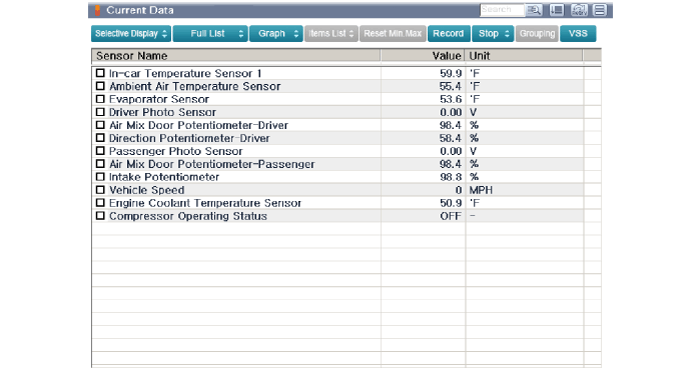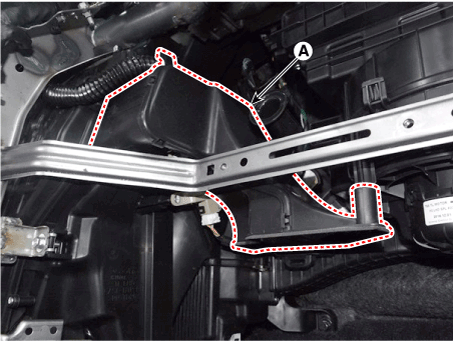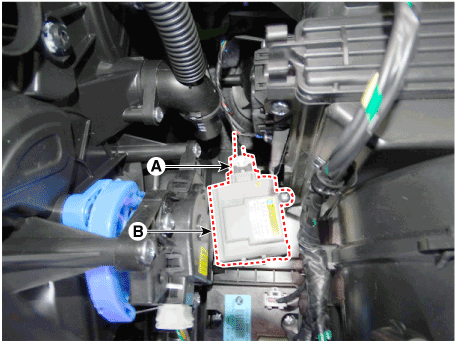Hyundai i-30: Air Conditioning System / Cluster Ionizer
Components and components location
| Components Location |
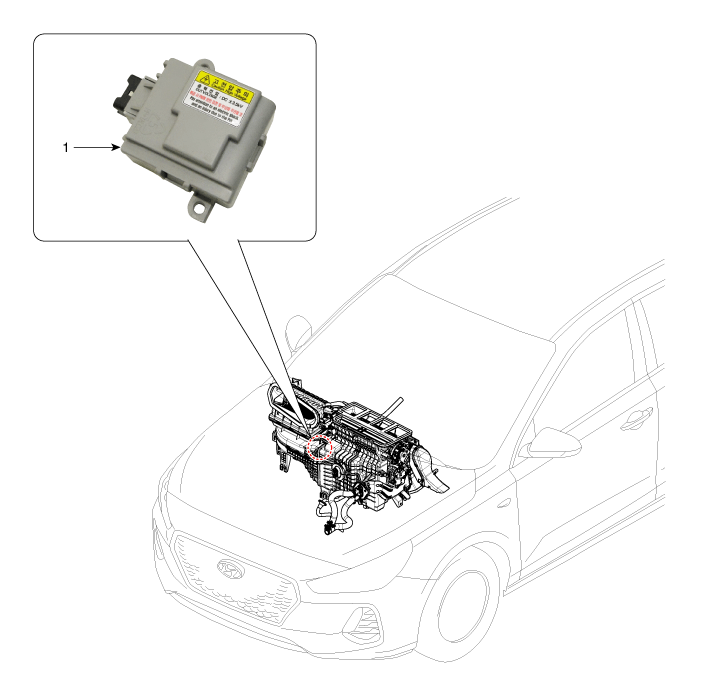
| 1. Cluster lonizer |
Description and operation
| Description |
The cluster ionizer makes disinfection and decomposition of bad smell from the
air-conditioner or inflow air. And it cleans the inside air of a vehicle.
When the ignition switch is ON, the ionizer runs "CLEAN" mode and then "ION"
mode, switching between both modes.
In the “CLEAN” mode, the cluster ionizer generates negative ions and positive
ions to help clean smells from the air.
In the “ION” mode, the cluster ionizer generates negative ions and cleans inside
air of a vehicle.
Repair procedures
| Inspection |
| 1. |
Press the MODE switch more then 4 times within 2 seconds while pressing
the OFF switch.
* For diagnostic procedure, refer to DTC guide.
|
| Diagnosis With GDS |
| 1. |
The heating, ventilation and air conditioning can be quickly diagnosed
failed parts with vehicle diagnostic system (GDS).
※ The diagnostic system (GDS) provides the following information.
(1) Self diagnosis : Checking the failure code (DTC) and display.
(2) Current data : Checking the system input/output data state.
(3) Actuation test : Checking the system operation condition.
(4) Additional function : Other controlling such as he system option
and zero point adjustment.
|
| 2. |
Select the 'Car model' and the system to be checked in order to check
the vehicle with the tester.
|
| 3. |
Select the 'Current data' menu to search the current state of the input
/ output data.
The input / output data for the sensors corresponding to the Cluster
Ionizer can be checked.
|
| Replacement |
| 1. |
Disconnect the negative (-) battery terminal.
|
| 2. |
Remove the crash pad center panel.
(Refer to Body - "Crash Pad Center Panel")
|
| 3. |
Remove the passenger's side shower duct (A).
|
| 4. |
Disconnect the connector (A) and then remove the passenger's side temperature
control actuator (B) after loosening the mounting screws.
|
| 5. |
To install, reverse the removal procedure.
|
 Auto Defogging Sensor
Auto Defogging Sensor
Description and operation
Description
The auto defogging sensor is installed on the front window glass. The sensor
judges and sends signal if moisture occurs to blow out wind for defogging...
 Duct Sensor
Duct Sensor
Components and components location
Component Location
1. Duct sensor
[Vent]
2. Duct sensor
[Floor]
Repair procedures
Inspection
1...
Other information:
Hyundai i30 (PD) 2018-2025 Owner's Manual: Smart cruise control (SCC) with stop & go system
➀ Cruise indicator ➁ Set speed ➂ Vehicle-to-vehicle distance To see the SCC screen on the LCD display in the cluster, select ASSIST mode (). For more information, refer to “LCD Display Modes” in chapter 3. The Smart Cruise Control System allows you to program the vehicle to maintain constant speed and minimum distance between the vehicle ahead...
Hyundai i30 (PD) 2018-2025 Owner's Manual: Vanity mirror lamp, Puddle lamp
Vanity mirror lamp Push the switch to turn the light on or off. • : The lamp will turn on if this button is pressed. • : The lamp will turn off if this button is pressed. NOTICE Always have the switch in the off position when the vanity mirror lamp is not in use...
Categories
- Manuals Home
- 3rd Generation i30 Owners Manual
- 3rd Generation i30 Service Manual
- Auto door lock/unlock features
- Brake/clutch fluid
- Battery replacement
- New on site
- Most important about car
Air bag - supplemental restraint system
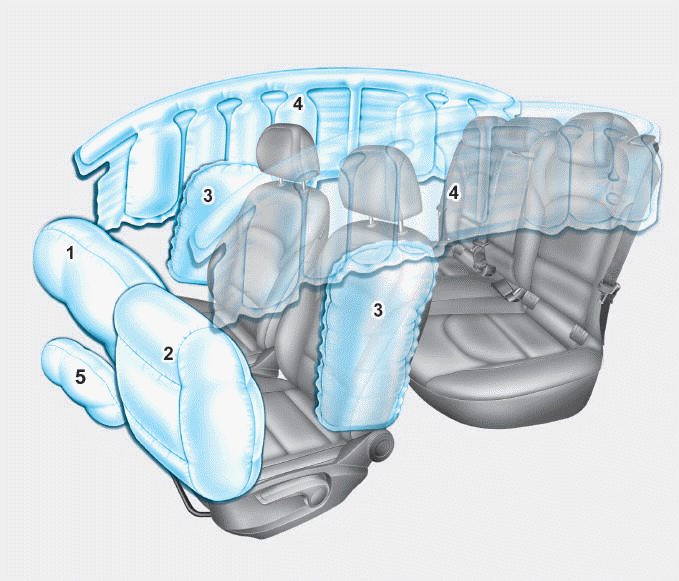
1. Driver’s front air bag
2. Passenger’s front air bag
3. Side air bag*
4. Curtain air bag*
5. Knee air bag*
6. Front passenger air bag ON/OFF
switch
Copyright © 2025 www.hi30.net

